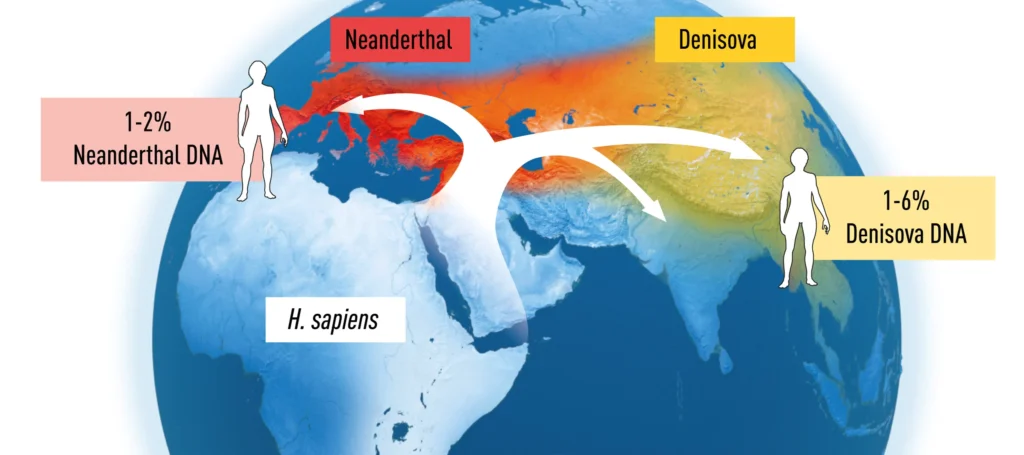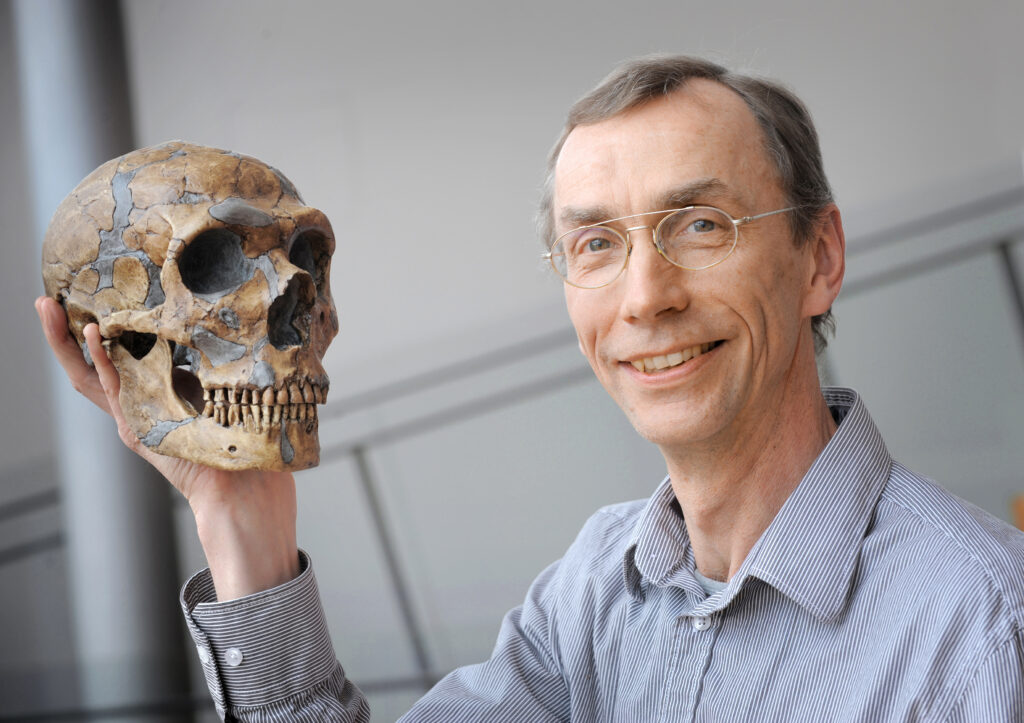The 2022 Nobel Prize in Physiology or Medicine has been awarded to Svante Pääbo for his work on human evolution; Pääbo was born in Stockholm to an Estonian mother and Swedish father.
The Nobel Assembly at Karolinska Institutet announced on 3 October that the 2022 Nobel Prize in Physiology or Medicine would be awarded to Svante Pääbo for his discoveries concerning the genomes of extinct hominins and human evolution.
“Through his pioneering research, Svante Pääbo accomplished something seemingly impossible: sequencing the genome of the Neanderthal, an extinct relative of present-day humans,” the Nobel Assembly said.
Pääbo also made the “sensational discovery” of a previously unknown hominin, Denisova.
“Importantly, Pääbo also found that gene transfer had occurred from these now extinct hominins to Homo sapiens following the migration out of Africa around 70,000 years ago. This ancient flow of genes to present-day humans has physiological relevance today, for example affecting how our immune system reacts to infections,” the assembly noted.
“Pääbo’s seminal research gave rise to an entirely new scientific discipline; paleogenomics. By revealing genetic differences that distinguish all living humans from extinct hominins, his discoveries provide the basis for exploring what makes us uniquely human.”
Researching the DNA of Neanderthals
Svante Pääbo was born in 1955 in Stockholm, Sweden, and grew up with his mother, an Estonian war refugee and chemist, Karin Pääbo. His father was the Swedish biochemist Sune Bergström, who had an extramarital affair with Svante Pääbo’s mother.
Sune Bergström, together with Bengt I. Samuelsson and John R. Vane, was awarded the Nobel Prize in Physiology or Medicine in 1982.
In a 2007 interview with the Estonian weekly newspaper Eesti Ekspress, Karin Pääbo said that her son became interested in science at the age of 13 or 14, following a trip the two took to Egypt. Karin Pääbo, who died in 2007, had also visited Estonia on several occasions with her son.
Pääbo defended his Ph.D. thesis in 1986 at Uppsala University and was a postdoctoral fellow at the University of Zürich, Switzerland, as well as the University of California, Berkeley, USA.
Early in his career, Svante Pääbo became fascinated by the possibility of utilising modern genetic methods to study the DNA of Neanderthals. However, he soon realised the significant technical challenges, as DNA becomes chemically modified and degrades into short fragments over time. Put another way, after thousands of years, only trace amounts of DNA are left, and what remains is severely contaminated with DNA from bacteria and contemporary humans.
As a postdoctoral student under Allan Wilson, a pioneer in the field of evolutionary biology, Pääbo started developing methods to study DNA from Neanderthals, an endeavour that lasted several decades.

In 1990, Pääbo was recruited by the University of Munich, where, as a newly appointed professor, he continued his work on archaic DNA. Later, Pääbo took on the enormous challenge of sequencing the Neanderthal nuclear genome and in 1997, was offered the opportunity to establish a Max Planck Institute in Leipzig, Germany.
At the new institute, Pääbo and his team steadily improved the methods to isolate and analyse DNA from archaic bone remains. The research team exploited new technical developments, which made the sequencing of DNA highly efficient. By 2010, Pääbo and his co-workers could investigate the relationship between Neanderthals and modern-day humans from different parts of the world.
Their research showed that Neanderthals and Homo sapiens interbred during a millennium of coexistence. In modern-day humans of European or Asian descent, approximately one to four percent of the genome originates from Neanderthals.
Maris Laan, an Estonian associate professor of biotechnology who worked under Pääbo, has described him as an extremely warm and creative person who doesn’t care about hierarchy, saying that both graduates and laboratory staff were as important as professors in the Munich research group.
“The only difference was when it came to paying the joint restaurant bills – Pääbo always paid most of the bills himself, leaving proportionally much smaller amounts for the Ph.D. students and even smaller amounts for the researchers and graduates,” Laan told Eesti Ekspress in 2007.

Denisova discovery
In 2008, a 40,000-year-old fragment from a finger bone was discovered in southern Siberia’s Denisova cave. The bone contained exceptionally well-preserved DNA, which Pääbo’s team sequenced. The results caused a sensation: the DNA sequence was unique when compared to all known sequences from Neanderthals and present-day humans.
Pääbo had discovered a previously unknown hominin, which was given the name Denisova. Comparisons with sequences from contemporary humans representing different parts of the world showed that gene flow had also occurred between Denisova and Homo sapiens. This relationship was first seen in populations in Melanesia and other parts of Southeast Asia, where individuals carry up to six percent of Denisova DNA.

“Pääbo’s discoveries have generated [a] new understanding of our evolutionary history. At the time when Homo sapiens migrated out of Africa, at least two extinct hominin populations inhabited Eurasia. Neanderthals lived in western Eurasia, whereas Denisovans populated the eastern parts of the continent. During the expansion of Homo sapiens outside Africa and their migration east, they not only encountered and interbred with Neanderthals, but also with Denisovans,” the Nobel Assembly said.
Through his research, Pääbo established an entirely new scientific discipline, paleogenomics.
“Pääbo’s discoveries have established a unique resource, which is utilised extensively by the scientific community to better understand human evolution and migration,” the assembly said. “Thanks to Svante Pääbo’s discoveries, we now understand that archaic gene sequences from our extinct relatives influence the physiology of present-day humans.”

According to the Nobel Assembly, the genetic differences between Homo sapiens and our closest extinct relatives, Neanderthals, were unknown until they were identified through Pääbo’s seminal work.
The Nobel Prizes are five separate prizes that, according to benefactor Alfred Nobel’s will, are awarded to “those who, during the preceding year, have conferred the greatest benefit to humankind.”
Alfred Nobel was a Swedish chemist, engineer and industrialist most famous for the invention of dynamite. He died in 1896; in his will, he bequeathed all of his “remaining realisable assets” to be used to establish five prizes which became collectively known as the “Nobel Prizes”, first awarded in 1901.
The Nobel Prize in Physiology or Medicine is awarded yearly by the Nobel Assembly at the Karolinska Institutet for outstanding discoveries in physiology or medicine.

